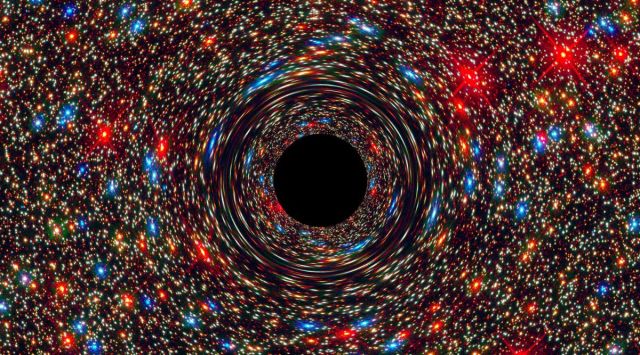Webb telescope finds most distant active supermassive black hole
The James Webb Space Telescope has helped scientists discover the most distant active supermassive black hole discovered to date.
 This representative image shows a cumpuer-simulated black hole at the core of a galaxy. (NASA, ESA, and D. Coe, J. Anderson, and R. van der Marel (STScI))
This representative image shows a cumpuer-simulated black hole at the core of a galaxy. (NASA, ESA, and D. Coe, J. Anderson, and R. van der Marel (STScI)) Supermassive black holes are terrifying cosmic entities that hold together entire galaxies with their gravitational power, sucking in and shredding anything that gets too close. So perhaps it is a good thing that the one found by the James Webb Telescope is the most distant one detected to date.
Distances in space are simply mindboggling. The new active supermassive black hole is at the centre of a galaxy CEERS 1019, which existed around 570 million years after the big bang, according to the University of Texas at Austin. Apart from the supermassive one, researchers also discovered two black holes that are “on the small side” and existed 1 billion and 1.1 billion years after the big bang.
CEERS 1019 is extremely old but that is not the most remarkable thing about it. It is quite lightweight, speaking in galactic terms. It weighs in at aroun 9 million solar masses, which is a lot less than other black holes that also existed in the early universe and were detected by telescopes.
Those early black holes are usually behemoths that weigh in at more than one billion times the mass of the Sun. This also makes them easier to detect because their accretions disks are much brighter. But the CEERS 1019 black hole is more like the one at the centre of the Milky Way, which is about 4.6 million times the mass of the Sun.
Despite its relatively diminutive size, the black hole existed so long ago that scientists are struggling to explain how it formed so soon after the universe began. The galaxy hosting the black hole seems to be inhaling as much gas as it can while also cranking out new stars.
The observational studies on the newly-discovered black hole and other cosmic marvels have been published in several papers in a special edition of The Astrophysical Journal Letters.







